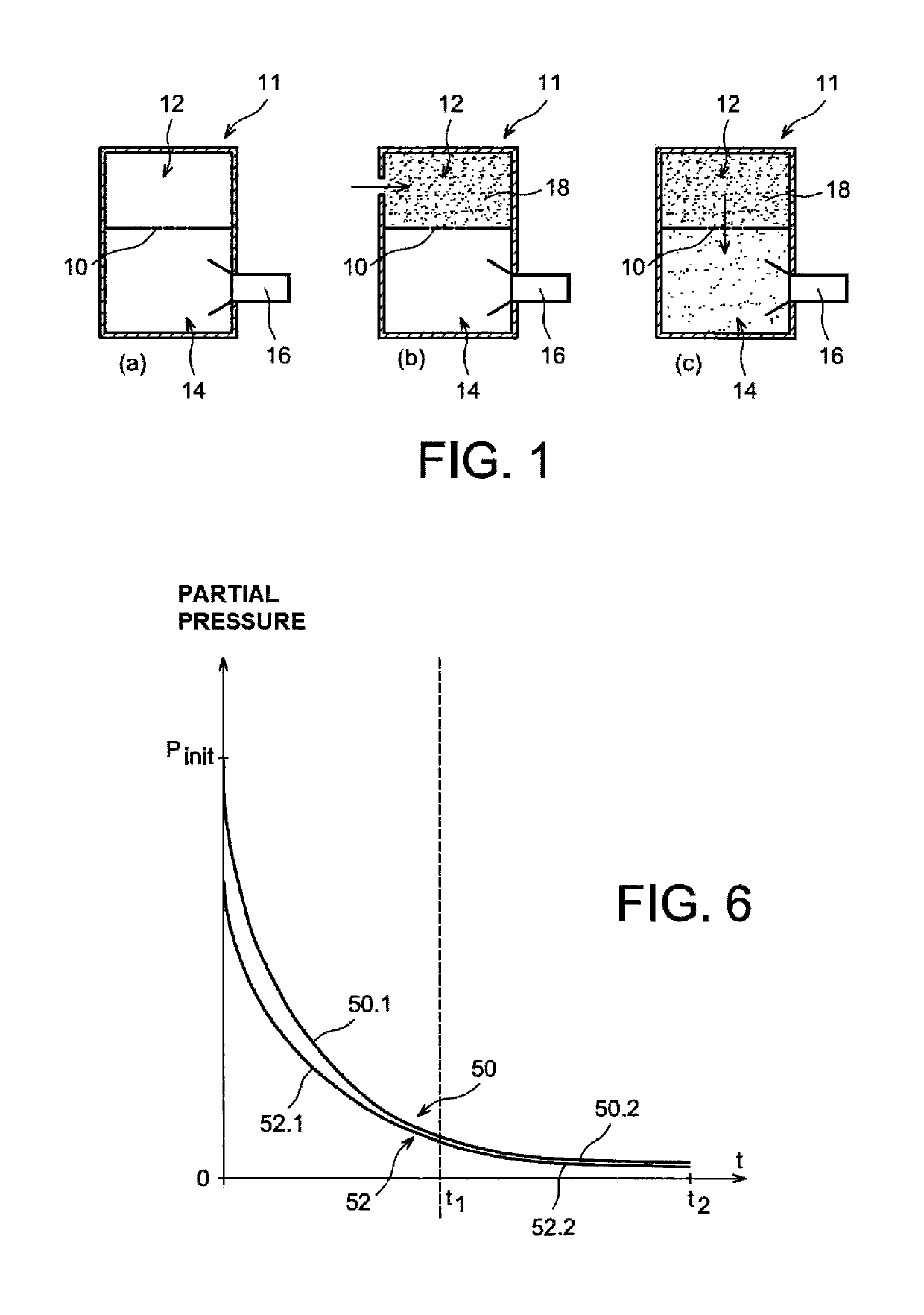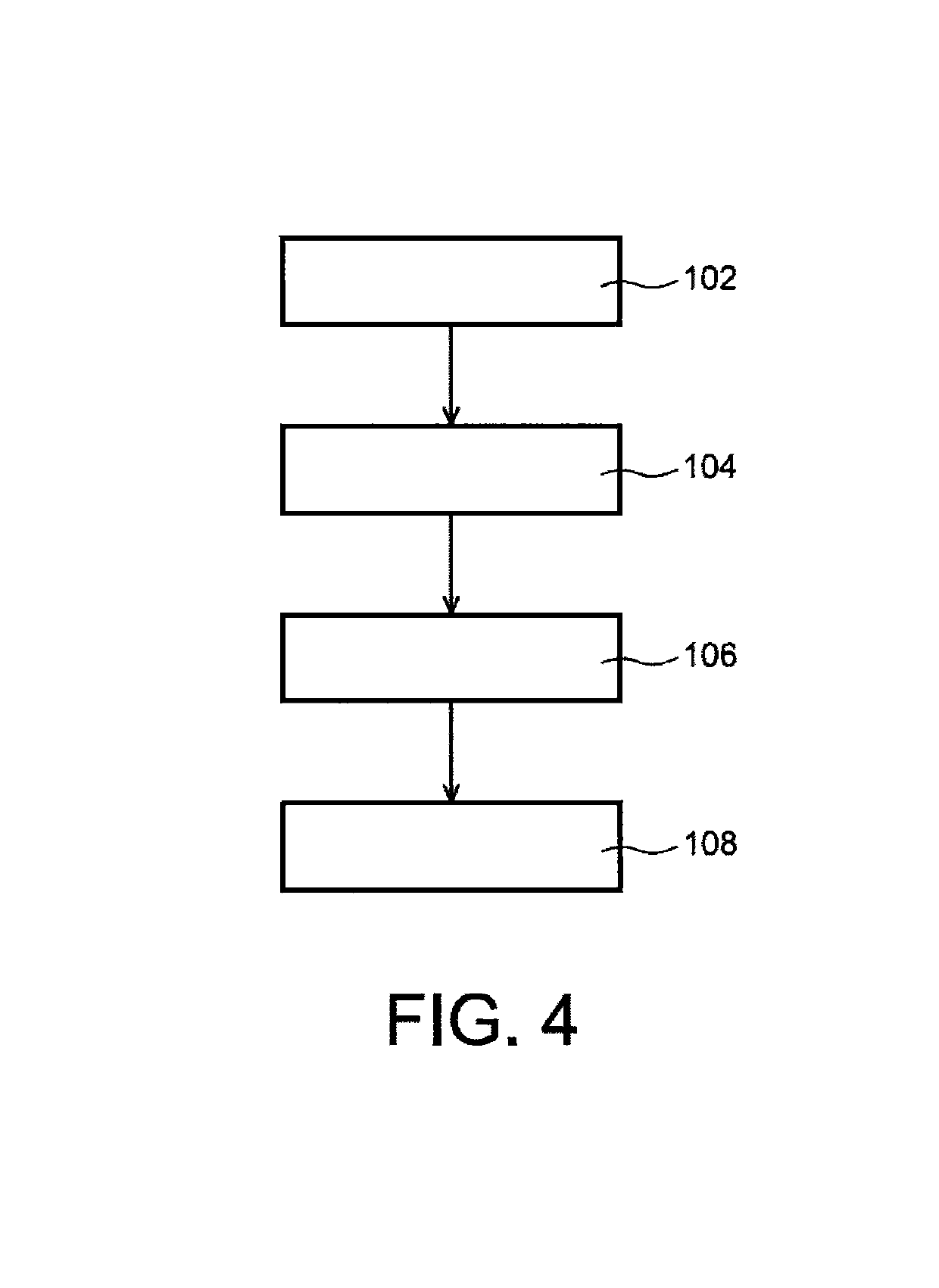Device and method for estimating a flow of gas in an enclosure maintained at reduced pressure in relation to the gas
a technology of gas flow and enclosure, which is applied in the direction of permeability/surface area analysis, instruments, suspensions and porous materials, etc., can solve the problems of reliability of measurement, particularly long time lags, etc., and achieves the effect of reducing time, more sensitive, and more reliabl
- Summary
- Abstract
- Description
- Claims
- Application Information
AI Technical Summary
Benefits of technology
Problems solved by technology
Method used
Image
Examples
Embodiment Construction
[0097]The implementation of a method for estimating the permeation of a barrier layer 10, or barrier film, having in particular barrier properties relative to one or more gases is described according to a particular embodiment. The gas(es) considered here is (are) for example water vapor, dioxygen, one of the water or oxygen isotopes, helium, hydrogen or a mixture of at least two of these gases. This method is implemented using in particular a permeameter 11 as previously described in connection with FIG. 1. The different steps of this method are shown in FIG. 4 as a diagram.
[0098]A first step of this method is to calculate an estimation of the change over time of the background noise in the detection enclosure of the permeameter 11, that is in the second chamber 14 of the permeameter 11 (step 102). This estimation of the background noise is to estimate the change over time of the gas flow in the enclosure formed by the second chamber 14 and which corresponds to a pressure decrease ...
PUM
| Property | Measurement | Unit |
|---|---|---|
| pressure | aaaaa | aaaaa |
| permeation | aaaaa | aaaaa |
| pressure | aaaaa | aaaaa |
Abstract
Description
Claims
Application Information
 Login to View More
Login to View More - R&D
- Intellectual Property
- Life Sciences
- Materials
- Tech Scout
- Unparalleled Data Quality
- Higher Quality Content
- 60% Fewer Hallucinations
Browse by: Latest US Patents, China's latest patents, Technical Efficacy Thesaurus, Application Domain, Technology Topic, Popular Technical Reports.
© 2025 PatSnap. All rights reserved.Legal|Privacy policy|Modern Slavery Act Transparency Statement|Sitemap|About US| Contact US: help@patsnap.com



